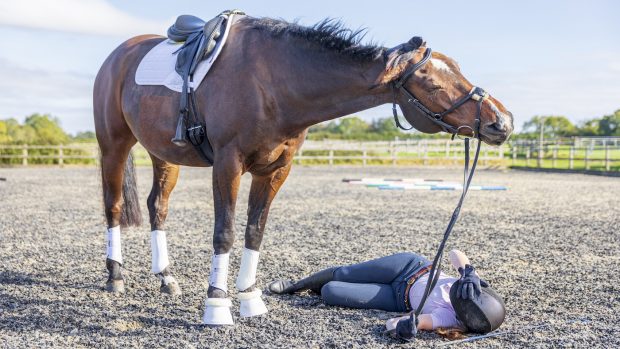Even without training, it is possible for onlookers to assess pain and lameness in ridden horses using an ethogram, research has shown.
Dr Sue Dyson, head of clinical orthopaedics at the Centre for Equine Studies at the Animal Health Trust (AHT), gave a presentation at the Saddle Research Trust conference yesterday (8 December), on her study into the application of the ethogram.
The ethogram comprises 24 behaviours more likely to be seen in lame than sound horses. The presence of eight or more is likely to reflect pain.
It was applied to footage of 21 horses by a trained analyst and 10 people who had not had specialist equine behaviour training. Results for the lame horses before and after musculoskeletal pain had been “substantially” reduced by diagnostic nerve-blocking.
It was found that although the untrained assessors generally marked a higher number of behaviours exhibited by the lame horses than the trained observer, all of them showed a “highly significant decrease in overall behaviour scores” after the diagnostic nerve-blocks.
“Encouragingly, this study shows that the ethogram can be used by both trained and non-trained assessors,” said Dr Dyson. “However, training of assessors is required for accurate interpretation of all features of the ethogram.”
Continued below…

Top vet identifies ‘naughty’ behaviours that might show your horse is lame
The latest research by Dr Sue Dyson to identify lameness through a horse’s behaviour and facial expressions has successfully completed

Is your horse in pain? New videos explain the key signs
The aim of the video series is to improve welfare and performance in ridden horses

Subscribe to Horse & Hound magazine today – and enjoy unlimited website access all year round
The fact the behaviour changes are clearly measurable after the musculoskeletal pain has been removed indicates that the ethogram is not only helpful in recognising the presence of the pain, it may also be a good tool for monitoring progress after treatment.
The ethogram was developed by Dr Dyson and her team at the AHT to help owners, trainers and vets recognise pain in ridden horses early, rather than dismissing some signs as behavioural or “just the way the horse has always gone”, and therefore not seeking veterinary advice until the problem has become worse.
For more news from the Saddle Research Trust conference, see Horse & Hound magazine, on sale Thursday 13 December



